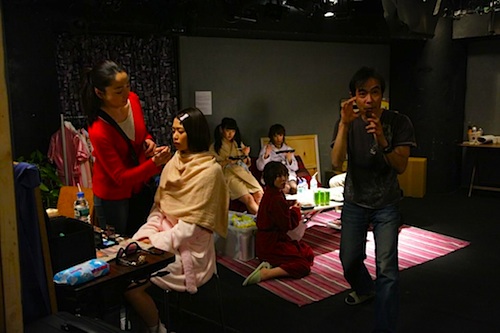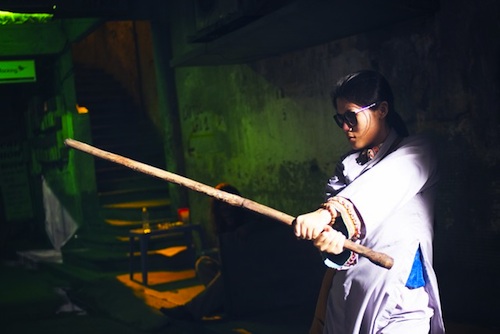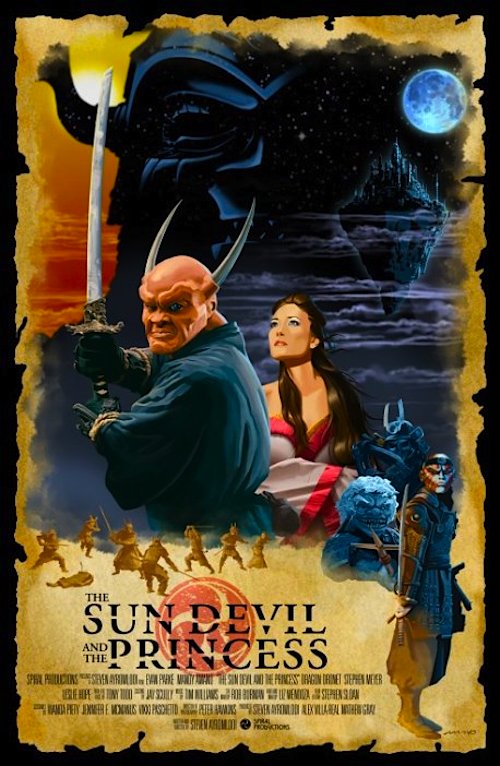By Joe Bendel. The Japanese dirty movie business has a reputation for being more extreme than its American counterparts, but its boundaries with the legit entertainment world are more porous. Many Japanese pornstars become national celebrities and some even crossover to the mainstream. After helming who knows how many adult features, director Kei Morikawa has done just that with Makeup Room, a mainstream film about the porn industry that screenedas part of the 2015 Japan Cuts Festival of New Japanese Film.
By Japanese Adult Video (AV) standards, this will be a large-scale shoot. Kyoko will have five actresses to makeup and periodically retouch. There will also be some guys in the video, but nobody seems to care what they look like. She is supposed to have an assistant, but the flake never makes it to the set. It is just one of many things that will go wrong, but somehow Kyoko keeps it all together.
We first meet Sugar and Saki, two dependable “specialty” players, who are distressed by the number of lines they must memorize. To further complicate matters, they must switch parts when Sugar’s conspicuous back tattoo disqualifies her from playing the “Lolita” role. Eventually, the star attraction Masami arrives, immediately crashing in the makeup chair. Later, they are joined by the enthusiastic veteran Masako, and a shy ingénue known as Matsuko until the studio comes up with her permanent stage name.
Adapting his stage play, Morikawa keeps the action anchored solely in the makeup room, but he makes a point of letting us hear what happens on the set. He embraces the inherent staginess to emphasize the extreme difference between the two rooms. When the actresses are on-camera, they are sex objects, but when they sit in Kyoko’s chair, they are real women, with their own very particular insecurities and neuroses.

The actresses are all played by real life AV stars and they are each terrific in very different ways. Regardless of the quality of their prior film work, they can act. In fact, Beni Ito and Kanami Osako are shockingly moving as Saki (a part-time prostitute struggling to catch on in the AV business) and Masami (the young diva dealing with the repercussions of her notoriety), respectively. Nanami Kawakami also displays first rate comedic chops as the brash (and still very keen) Masako. Nobody takes it over the top or resorts to shtick, least of all mainstream indie thesp Aki Morita as Kyoko. She gives a wonderfully sensitive and suggestive performance that reveals so little about her character in practical terms, it will have viewers creating their own backstories for her.
Makeup Room compellingly humanizes the AV actresses, but it does not glamorize their business. Except for maybe Masako, nobody is enjoying this career. Some seem to think it is a “sex-positive” film or whatever, but if this empowering, you wouldn’t want to see exploitative. However, it is all quite honest, and messy, and very human. Even though you never see, you will clearly hear, so viewer discretion is advised. Recommended surprisingly highly for mature audiences, Makeup Room screened as part of this year’s Japan Cuts.
LFM GRADE: A-
Posted on July 10th, 2015 at 3:57pm.




